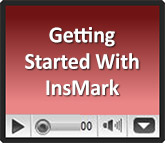(Presentations were created using the Loan-Based Split Dollar System.)


For those with clients who own C corporations, did you know there is an IRS-approved way for owner executives to move money out of a C corporation without paying any tax on it? It’s called loan-based split dollar, and it works this way:
The corporation extends an annual series of loans to the covered executive. The loans are used to purchase an investment-grade life insurance policy (indexed universal life, for example).
Policy values and death benefits secure the loans. The loans can be repaid to the corporation in several ways:
- Withdrawal or loan of policy values;
- Death benefit of the policy;
- Bonus from the corporation.
At retirement, the policy can be accessed by the executive free of income tax using secured policy loans.
Here is an example:
- Executive age 45 in a 45% marginal income tax bracket;
- Face amount of policy: $2,200,000;
- Policy premiums: $100,000 a year for 7 years;
- Loans from corporation to executive: $100,000 a year for 7 years;
- Single bonus to the executive in years 1 – 20 to cover the loan interest costs due the corporation;
- Loan repayment: In years 16 – 20, the corporation effects a gradual rollout of the split dollar arrangement equally over five years by way of a gross-up bonus used by the executive for loan repayment;
- Executive’s policy cash value at the end of 20 years: $1,900,063;
- Executive’s death benefit at the end of 20 years: $4,008,200;
- Executive’s annual loans for retirement cash flow in years 21 – 40: $165,000;
- Executive’s policy cash value at the end of 40 years: $1,688,707;
- Executive’s death benefit at the end of 40 years: $2,072,667;
- Executive’s cash-on-cash pre-tax equivalent IRR over 40 years: 33.41%;
- Executive’s pre-tax equivalent IRR on policy death benefit over 40 years: 33.54%.
During the period the loans are outstanding, the executive’s loan interest due to the corporation is pegged to the Applicable Federal Rate (AFR). As of this writing (August 2013), the AFR ranges between 0.28% (demand or short-term) and 3.16% (long-term) based on the length of the loan.
Note: It’s tempting to illustrate the short-term rate, but you should probably resist it. The demand rate changes monthly which makes a long-range life insurance proposal look meaningless. The short-term rate is good for only three years which makes a long-range illustration at this rate equally as problematic. We recommend you use the long-term rate because you can lock in the rate each time a loan is made. It’s probably best to let your client’s legal and tax advisers recommend which AFR to use.
Click here to view the actual InsMark illustration for this loan-based split dollar arrangement.
Here is an interesting prohibition: loan-based split dollar can only be used by privately-owned corporations. The big boys (public companies) can’t, thanks to Sarbanes-Oxley legislation. Most owners of privately-owned C corporations don’t know about loan-based split dollar, so you have a wide open field if you have access to such firms.
Note: In the past, most small, successful firms were either formed as S corporations or converted from C to S status. In view of the recent increases in individual income tax rates, you may see a significant switch back to C status.
Note: The concept works for key non-shareholders executives of any privately-owned business entity where the owners want to favor a few with a superb benefit plan.
InsMark’s Referral Resources
(Put our Illustration Experts to Work for Your Practice)
We created Referral Resources to deliver a “do-it-for-me” illustration service in a way that makes sense for your practice. You can utilize your choice of insurance company, there is no commission split, and you don’t have to change any current relationships. They are very familiar with running InsMark software.
Please mention my name when you talk to a Referral Resource as they have promised to take special care of my readers. My only request is this: if a Referral Resource helps you get the sale, place at least that case through them; otherwise, you will be taking unfair advantage of their generous offer to InsMark licensees.
Save time and get results with any InsMark illustration. Contact:
- Ben Nevejans, President of LifePro Financial Services in San Diego, CA.
Note: If you are an Independent Marketing Organization that is interested in becoming an InsMark Referral Partner, please contact Julie Nayeri or David Grant at the number or email address indicated in the paragraph that follows.
For a license to use InsMark’s Loan-Based Split Dollar System, go to InsMark or contact Julie Nayeri at InsMark at julien@insmark.com or (888) InsMark (467-6275). Institutional inquiries should be made to David A. Grant, Senior Vice President – Sales at (925) 543-0513 or dag@insmark.com.
InsMark’s Digital Workbook Files
If you would like some help creating customized versions of the presentations in this Blog for your clients, watch the video below on how to download and use InsMark’s Digital Workbook Files.
Digital Workbook Files For This Blog
Download all workbook files for all blogs
|
Note: If you are viewing this on a cell phone or tablet, the downloaded Workbook file won’t launch in your InsMark System. Please forward the Workbook where you can launch it on your PC where your InsMark System(s) are installed. |
![]()
More Recent Articles:
Blog #14: The #1 Financial Concern of Most People? Running Out of Money!
Blog #13: A New Look At An Old Idea
Blog #12: Three Smart (and relatively unknown by clients) Tax Strategies for Retirement Accounts
Blog #11 – Your Often Dead Without Deadlines
Blog #10: Annuity Rescue Made Easy
| 3 Reasons Why It’s Profitable For You To Share These |
| Blog Posts With Your Business Associates and |
| Professional Study Groups (i.e. “LinkedIn”) |
Robert B. Ritter, Jr. Blog Archive




